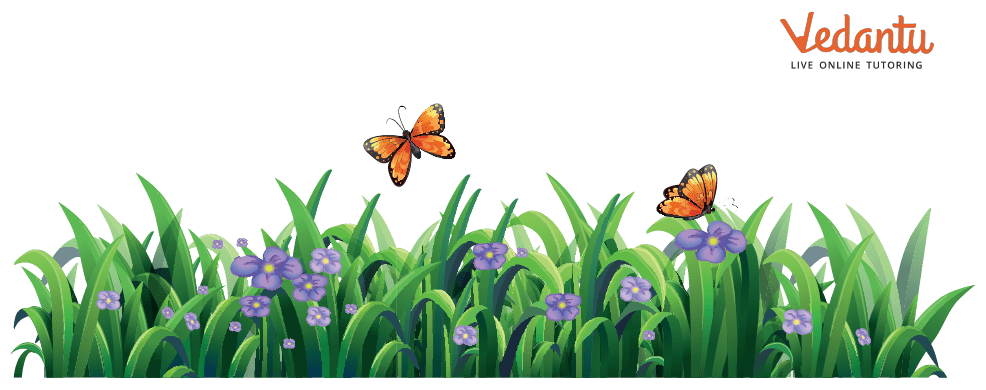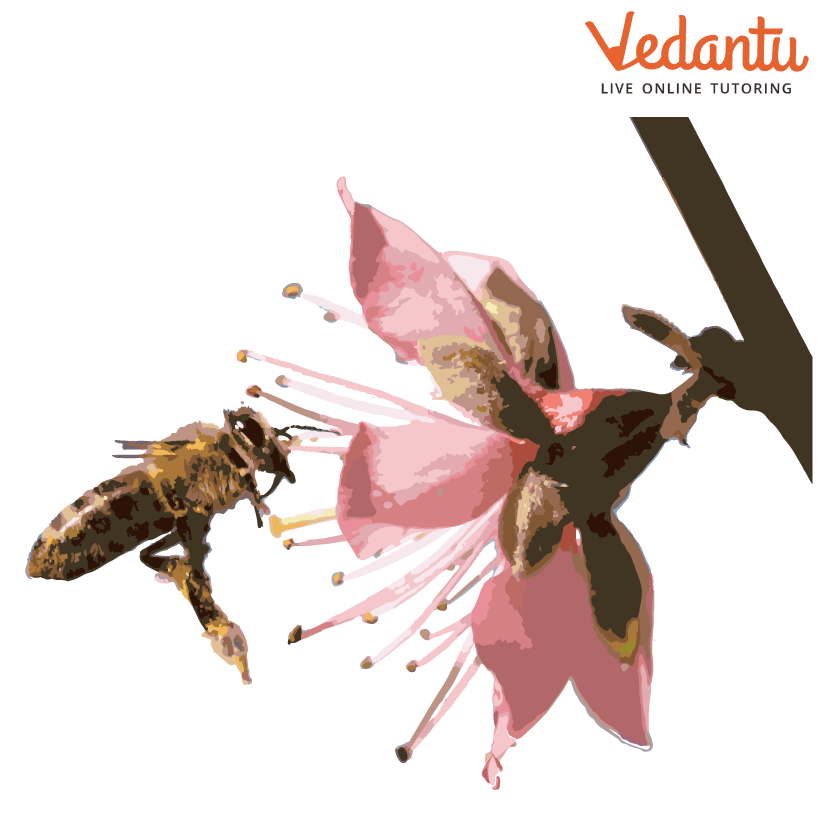




Pollination
Pollen is necessary for flowering plants and plants that make cones to reproduce sexually. Each grain of pollen carries the male gametes required for fertilisation. Pollen is essential for sexual reproduction in plants that produce cones and flowers. Every pollen grain contains the necessary male gametes for fertilisation.
Pollen is created in pollen cones by plants that bear cones. Pollen is produced in the anthers of flowers by flowering plants.
The stamen's anthers are where pollen is made.
The male DNA of a plant is transferred to the female portion of the flower by pollen, which enables the plant to reproduce.
Every living thing, including plants, aspires to reproduce to sustain future generations.

Pollination Happening with Two Butterflies
Pollination
It facilitates fertilisation and the development of seeds. Pollination is the movement of pollen from an anther of a plant to the stigma of a plant, most frequently by an animal or wind. Making seeds is one method through which plants can create offspring. The genetic material needed to create a new plant is found in seeds. Pollen may drop off the flower's stigma when the animal visits another flower for the same purpose.
Plants create their seeds using flowers as their tools.
Only when pollen is exchanged between flowers of the same species.
The unexpected result of an animal's activities on a flower is typically pollination.
Pollination is the sole means of reproduction for all flowering plants. Self-pollination and cross-pollination are the two types of pollination.
Functions of Pollen
The ultimate purpose of pollen is to transfer male gametes from a plant's stamen to an ovule, where they will fertilise an egg, which will later grow into a seed.
It is released into the air and carried by the wind during the spring, summer, and fall seasons. The wind spreads it to other plants so they can produce seeds.
The male component of plant and tree reproduction is represented by pollen grains.
Join the female portion of the plant and form a new seed; these tiny creatures circulate in the air and on insects' legs.
It helps to get attached to other pollinators when dispersed in the air.
Bee Pollination
The bee's senses have been adapted to identify signals sent by flowers by their colour and scent on the one hand. Bees have colour vision.
Bees may see UV light, and flowering plants "know" this. UV-reflecting pigments are present in them. This implies that the bees know the best landing spots and the locations of the nectar sources.
Bees use their antennae to smell. They can sense it physically, which allows them to locate the source of the scent and move directly toward the flowering plant to pollinate it and gather nectar.
The bees gather up pollen nearly as they fly, mainly utilised to rear the colony and include a lot of protein.
Bees always seek out the best conditions and make honey from the fewest number of flower sources.

Bee Pollination
Conclusion
The process of pollination is essential to the life cycle of plants. Pollen is transported between flowering plants by insects, birds, bats, and the wind, allowing the plants to create seeds and reproduce. The wind gathers pollen that has been released into the atmosphere. The wind spreads it to other plants so they can produce seeds. Bees can land in the best locations because they know nearby nectar sources. The nectar, the source of honey, is ingested by the bees.






FAQs on What is Pollination For Kids?
1. What does a flower's pollen do?
Anthers, the male portion of the flower, rub or drop pollen onto a pollinator. The pollinator then transfers this pollen to another flower, where the stigma is affected (the female part). Later on, the fertilised flower produces fruit and seeds.
2. What benefit does pollen provide?
The male DNA of a plant is transferred to the female portion of the flower by pollen, which enables the plant to reproduce. Pollen can alter a plant's characteristics because it includes DNA. Such changes can improve crop production or a plant's survival in a specific format.
3. How come bees require pollen?
Both nectar and pollen are essential for bee nutrition. While the pollen offers protein and other nutrients, the nectar is used for energy. Bees carry pollen from plant to plant, providing pollination services. Bees consume the majority of pollen for their offspring.









